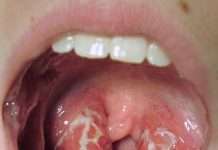
The Ebola virus disease is a severe disease, caused by Ebola virus, a member of the filovirus family that usually infects humans and primates. It was first detected in 1976, during outbreaks in the Democratic Republic of Congo and Sudan (South Sudan).
No cases of the virus were reported between 1979 and 1994. However, there have been outbreaks since 1994 and these outbreaks have been increasing in frequency. Before 2014, EVD outbreaks were mostly reported in remote villages close to tropical rain forests in West and Central Africa, with most confirmed cases in DRC, Gabon, the Republic of the Congo, Sudan and Uganda. The first West Africa outbreak was reported in 2014 in Guinea, Liberia and Sierra Leone.
During the outbreak between 2014 and 2016, there was widespread transmission in urban areas, leading to over 28,000 reported cases. This outbreak also led to the report of cases in multiple countries, including Italy, Mali, Nigeria, Senegal, Spain, the United Kingdom and the United States.
There are six species of Ebola virus, four of which are known to cause disease in humans. Those that cause disease in humans include Zaire Ebolavirus (EBOV), Sudan Ebola virus (SUDV), Tai Forest Ebola virus (TAFV), formerly known as Ebola Ivory Coast, and Bundibugyo Ebola virus (BDBV). The two species that affect primates are Reston Ebola virus (RESTV), and the Bombali Ebola virus, which was discovered in bats in Sierra Leone in 2018.
Transmission
Ebola virus infects the human population through contact with the blood, organs or bodily fluids of an infected animal. It is believed that the first human EVD case in West Africa (2014 to 2016) happened through exposure to bats. There are also documentations of EVD cases which happened in people who handled infected primates, like chimpanzees and gorillas, as well as forest antelopes, whether dead or alive, in Cote d’Ivoire, the Republic of Congo and Gabon.
Person-to-person transmission of Ebola virus can happen through direct contact with the blood, organs or other bodily fluids of an infected person. Infection can also happen through contact with objects like needles or soiled clothing that have been contaminated with infectious secretions. Burial practices that involve direct contact with the corpse of an infected person may also contribute to transmission. There are some parts of the human body where the virus can persist, even after acute illness and these include the testes, interior of the eye, the placenta and the central nervous system.
Transmission through sexual contact with a convalescent case survivor has been documented, largely owing to the fact that the virus can remain present in semen, many months after recovery. In areas with insufficient infection-control measures or barrier nursing precautions, health workers are usually at risk of infection, through close contact with EVD patients. For now, there is no record of infection through coughing or sneezing or through skin contact.
Symptoms and diagnosis
The incubation period for the Ebola virus disease ranges from two days to three weeks, with an average of eight to 10 days. The onset of the illness usually sets in suddenly, accompanied by symptoms like fever, headache, fatigue, muscle pain and sore throat. Other symptoms, which usually follow after a few days, include gastrointestinal problems, such as nausea, diarrhoea and vomiting. In some patients, symptoms like rashes, cough, shortness of breath, red eyes, hiccups, impaired kidney and liver function and internal and external bleeding may be present. 25 to 90 percent of all clinically ill cases are usually fatal and this depends on the virus species, patients’ age and other factors.
Clinical diagnosis of Ebola virus disease is usually difficult in the early stages of infection. This is because early symptoms are non-specific and similar to those of other infections, such as malaria, typhoid and meningitis. Laboratory diagnosis remains compulsory and this must be done under high-level biological containment conditions.
Diagnosis of acute infection is by reverse-transcriptase polymerase chain reaction (PCR) for viral RNA. The virus can also be isolated in tissue culture, but this is only used for research purposes. Serological tests may also be available for research use.
Treatment
The treatment course required for Ebola virus disease patients involves intensive supportive therapy, including intravenous fluids or oral rehydration with solutions including electrolytes and maintenance of oxygen status and blood pressure. Two monoclonal antibodies, REGN-EB3 (Inmazeb) and mAb114 (Ebanga) are available for the treatment of Ebola virus disease caused by Zaire Ebola virus.
The World Health Organisation’s Therapeutics for Ebola virus disease guidance recommends the use of REGN-EB3 and mAb114 for patients with laboratory confirmed Ebola virus disease infection and for neonates seven days old or younger with unconfirmed Ebola virus disease status, who are born to mothers with confirmed Ebola virus disease. As of today, there are no licensed therapeutics for the treatment of Ebola virus disease caused by Sudan Ebola virus. Monoclonal antibody therapeutics may be used within clinical trials.
Great care needs to be taken when nursing patients in order to avoid person-to-person infection. Patients should be isolated, with the adoption of strict barrier nursing techniques such as the waring of masks, gloves and gowns. This can also be complemented with other strict infection control measures.










